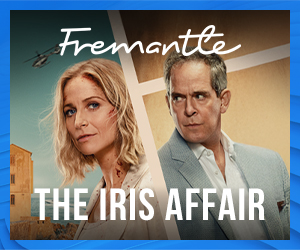
Subhash Chandra’s Essel Group wants to offload up to half of its holding– and possibly more – in entertainment company Zee Entertainment Enterprises Ltd (ZEEL) “in view of the changing global media landscape” and “to accelerate efforts to stay ahead of fast changing trends”.
Who has put an offer on the table? How will this be leveraged to flush out other potential bidders? And what does this mean for a market of 1.3 billion people with close to 50 million digital viewers and growing fast?
Although there was no shortage of speculation at presstime (Reliance? Chinese platforms? Alibaba? Facebook/Apple/Netflix/Google? Comcast?), the answer to the first is known only to the Essel inner circle and their advisors.
Picking apart the mid-November public announcement that 21% of Zee was on the block, it’s clear that anyone who puts their hand up will have to bring a strong presence in the global media and entertainment tech space. These are both attributes ZEEL says are missing from its current business. Which very likely means there’s some of that on the table already.
The way the initial offer (and, no, there is no one who believes the 13 November public announcement would have been made without an offer on the table) is being leveraged is bound to emerge in a leaky bucket market crawling with news outlets. And what does this mean? A billion dollar question... maybe US$10 billion or more, according to the Times of India, which in the days following the announcement said this could possibly be the biggest M&A deal in Indian media history.
Zee’s global ambitions have never been a secret, and it has skipped no one’s attention that the stakes in India have never been higher. Like Rupert Murdoch, the 68-year-old Subhash Chandra – billionaire media baron and the grandfather of Indian television entertainment – has looked around and realised he needs to out-drama his most dramatic story line in a media career that goes back to the early 1990s and the very beginning of multichannel TV in ...
Subhash Chandra’s Essel Group wants to offload up to half of its holding– and possibly more – in entertainment company Zee Entertainment Enterprises Ltd (ZEEL) “in view of the changing global media landscape” and “to accelerate efforts to stay ahead of fast changing trends”.
Who has put an offer on the table? How will this be leveraged to flush out other potential bidders? And what does this mean for a market of 1.3 billion people with close to 50 million digital viewers and growing fast?
Although there was no shortage of speculation at presstime (Reliance? Chinese platforms? Alibaba? Facebook/Apple/Netflix/Google? Comcast?), the answer to the first is known only to the Essel inner circle and their advisors.
Picking apart the mid-November public announcement that 21% of Zee was on the block, it’s clear that anyone who puts their hand up will have to bring a strong presence in the global media and entertainment tech space. These are both attributes ZEEL says are missing from its current business. Which very likely means there’s some of that on the table already.
The way the initial offer (and, no, there is no one who believes the 13 November public announcement would have been made without an offer on the table) is being leveraged is bound to emerge in a leaky bucket market crawling with news outlets. And what does this mean? A billion dollar question... maybe US$10 billion or more, according to the Times of India, which in the days following the announcement said this could possibly be the biggest M&A deal in Indian media history.
Zee’s global ambitions have never been a secret, and it has skipped no one’s attention that the stakes in India have never been higher. Like Rupert Murdoch, the 68-year-old Subhash Chandra – billionaire media baron and the grandfather of Indian television entertainment – has looked around and realised he needs to out-drama his most dramatic story line in a media career that goes back to the early 1990s and the very beginning of multichannel TV in Asia.
Zee’s move plays out against a high-stakes background awash with streaming/OTT players large and small, and ramping up already-frenetic content creation to a dizzying degree.
Netflix is more than doubling down, with an ambitious Indian original content slate for 2019 and plans to play with its pricing. Disney has more armor in its India war chest than ever as the new owner of Star India/Hotstar. Amazon has a keen eye on India, with a Rs129/US$1.81 a month offer that covers unlimited access to everything from premium video originals such as Mirzapur to music, books, toys, baby products, dog supplies, whatever, every day of the week including Sundays.
And ZEEL has Zee5, which went live in 190 countries in February this year with multi-genre content in 11 Indian languages and English, and promises of 100,000 hours of on-demand content, including movies, and more than 60 live television channels. India has about 35 OTT streaming platforms, including the global players, home-grown services such as Reliance’s JioTV, Eros Now, Voot and SonyLiv, and regional services such as Viu and Hooq.
The outcome of the review announced on 13 Nov is expected to be complete by March/April 2019, giving us three or four months of hot- and cold-running commentary and analysis of every Zee breath and blink.
Meanwhile, there are a few things we know for sure because they are in front of us in black and white. In its note to the Bombay Stock Exchange, ZEEL said the sale would pave the way for the company to “pursue disruptive technological development and transform the business into a tech-media company”. The Essel Group, which holds just under 42% of ZEEL, said the proposed sale of half the stake would “allow ZEEL shareholders to capture the full value of India’s largest entertainment broadcaster with an ever-strengthening bouquet”.
The decision to offload the ZEEL stake follows a family meeting over the Diwali holidays. Goldman Sachs Securities (India) and Lion Tree out of the U.S. have been appointed to identify possible buyers and to advise on the transaction. Between those few facts and the outcome, anything could happen.
Published in Issue Seven of ContentAsia's in-print + online 2018 (December 2018)


























